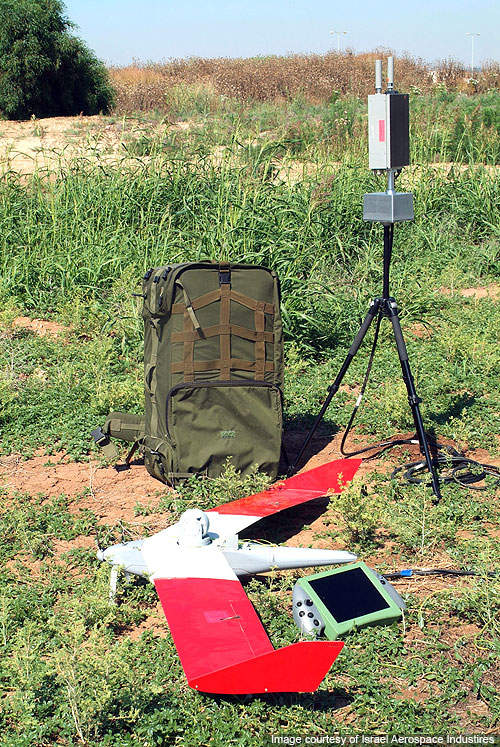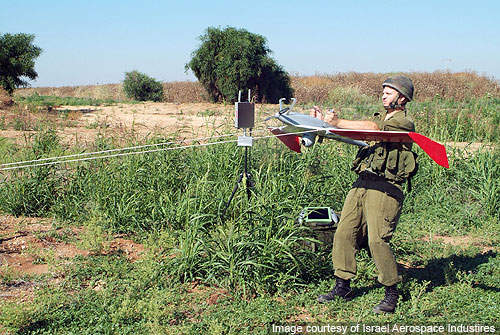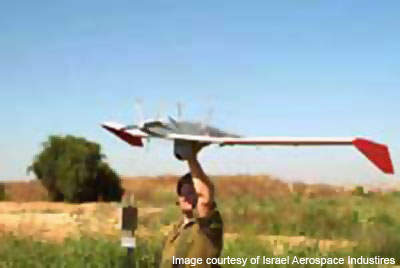The BirdEye 400 is a miniature unmanned aerial vehicle (UAV) designed and manufactured by the Malat Division of Israel Aerospace Industries (IAI).
The UAV performs intelligence, surveillance and reconnaissance (ISR) operations. Flying at an altitude of 1,000ft (304m), the BirdEye 400 can provide its operators with real-time intelligence data on enemy combatants.
The aircraft also executes real-time imagery capturing and hill intelligence. It captures real-time imagery and transmits it back to the portable ground control system (PGCS) via a satellite communication data link.
The aircraft achieved initial operational capability in 2005. The UAV was showcased at the Paris Air Show held in 2005.
Russian defence firm Oboronprom will provide assembly components and servicing for the UAV during 2011 under a $400m contract signed in October 2010.
IAI is also planning to build an advanced version, BirdEye 650, which can loiter in air for six hours.
BirdEye 400 UAV orders and deliveries
Israel signed two contracts worth $53m with Russia in April 2009 for delivering 12 BirdEye 400 UAVs.
The first contract included two Bird Eye 400 systems (worth $4m), eight I View MK150 tactical UAVs ($37m) and two Searcher Mk II multi-mission UAVs ($12m). They were delivered to Russia in September 2010.
Russia acquired 36 additional UAVs worth $100m by the end of 2010 under the second contract. It requires about 100 UAVs and ten ground control systems to enable efficient battleground reconnaissance.
BirdEye 400 UAV design
The BirdEye 400 is designed to take-off and land automatically even under adverse weather conditions, using an automatic flight control system.
The automated functions of the UAV enable the ground system operators to focus more on the overall task than vehicle control. The aircraft can be assembled in few minutes.
Features
The BirdEye 400 UAV system comprises three UAVs, a PGCS and satellite data links for line of sight (LOS) communications. The system features a power source, repair kit and a unique landing system.
It is incorporated with a real-time video camera to capture high resolution imagery in both day and night environments. The entire system is portable and can be deployed in the field by two people.
Navigation
The BirdEye 400 can be controlled either manually from the ground control system or through autonomous mode.
The automatic launch and recovery (ALR) system lands the aircraft automatically when communication between the UAV and the PGCS fails.
Sensors
The BirdEye 400 is fitted with a lightweight MicroPop EO (electro optical) observation system and infra-red sensor.
The MicroPop electro-optic system converts light rays into electronic signals for capturing images, real-time data and videos from low altitude.
Engines
The UAV is powered by an electric propulsion system, which reduces the noise signature and audio detection probability.
Portable ground control system
The data captured by the UAV is processed, retrieved and stored at the portable ground control system (PGCS).
The lightweight PGCS has been developed by IAI.
Digital ground communications between the vehicle and the ground control system can be performed through a secure, direct LOS datalink.
The PGCS features a portable remote video terminal and ground control equipment.
The computer monitor fitted in the PGCS displays missions planned using digital maps and pre-programmed flight coordinates control.
Performance
The UAV can fly at a maximum speed of 83km/h. Its cruise speed varies between 59km/h and 74km/h. The range and service ceiling of the aircraft are 10km and 304m respectively.
The aircraft weighs 1.2kg and its maximum take-off weight is 5.6kg.





